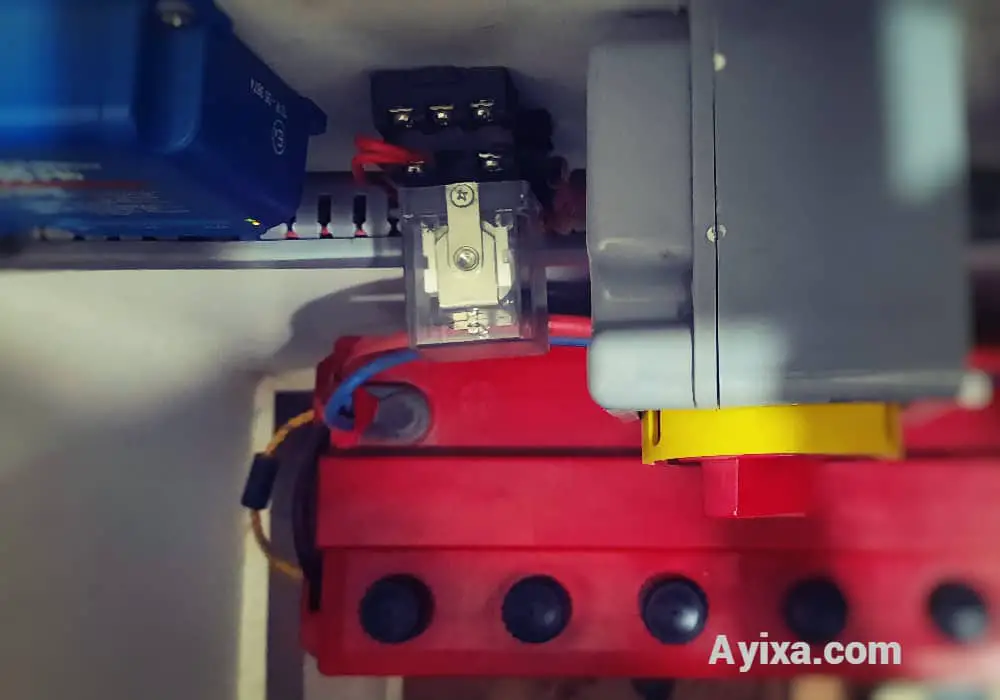This post may contain affiliate links. If you click an affiliate link and make a purchase, I may earn a commission at no extra cost to you whatsoever.
Is the charge controller in your off-grid solar system running hot?
Are you wondering what might be the cause and how to keep it running cool?
If so then read on for what you can and should expect if the charge controller is running normally, why it may be overheating, and for suggestions to prevent it from becoming hot in the first place.
Is it Normal for a Solar Charge Controller to Become Hot?
No, you don’t want your charge controller running hot. It should be mildly warm to the touch, ideally cool.
A hot solar charge controller will most probably fail prematurely!
Why a Solar Charge Controller May be Hot
Some of the components in the charge controller give off during the charging process.
Note: This is normal and therefore the charge controller may feel mildly warm.
You can avoid the charge controller from becoming hot in the first place by:
1. Select the right size (amps) of charge controller for your solar array
The more the current from the solar panels, the more heat the charge controller will get. Make sure to select an appropriately sized controller (rated amps) that can handle the size of the solar array (watts).
2. Install the charge controller where there is enough airflow to keep it running cool
Additionally, install the charge controller in a well-ventilated environment away from direct sources of heat.
Should You Overload a Solar Charge Controller?
I prefer to leave some headroom when selecting a charge controller. With a 40 amp charge controller, for example, I’ll limit the solar array amps to 80% or 80% x 40 amps = 32 amps so as not to run it at its limit.
In general, oversize the charge controller especially if you have plans to increase the size of the solar away (Watts) in the future.
Signs that a Solar Charge Controller Is Overloaded
It will feel hot to the touch shortly after connecting it to a solar array. Note this may be because of:
- a fault such as a short-circuit, or
- it is undersized for the array to which it is connected.
Therefore, confirm the current from the array (amps) using a DC clamp meter. Compare it to the maximum current (amps) that the charge controller can handle!
How Hot a Charge Controller gets?
Several charge controllers have a recommended temperature operating range of between -31°F to 140 °F. Confirm what’s recommended for your solar charge controller.
Tips to Check the Operating Temperature of the Solar Charge Controller
Point an infrared thermometer at the charge controller to measure its operating temperature and compare it to the recommended range.
Tips to Prevent a Charge Controller from Becoming Hot
To prevent your charge controller from running hot, consider the following suggestions:
1. Do not run it at the limit of its current handling ability. Leave some headroom when selecting a charge controller.
With a 40 amp charge controller, I’ll limit the solar array amps to 80% or 80% x 40 amps = 32 amps so as not to run it at its limit.
2. Install it in a location with good airflow away from direct sources of heat. This may be in your case, direct sunlight or any other source of heat close to where the charge controller is mounted.
If the ambient temperature of the place where the charge controller is high, consider running a cooling fan to improve airflow so that the charge controller runs cooler.
Make sure there’re no obstructions on either side of the charge controller that may be preventing the flow of air over the charge controller fins.
Closing Thoughts
If the charge controller is running extremely hot, check that it is not undersized for the size of the solar array (Watts) and that it is installed in a well-ventilated area so that it runs cool.
Remove any obstructions that may be preventing the proper flow of air over the controller to keep it running cool.
Related Topics
